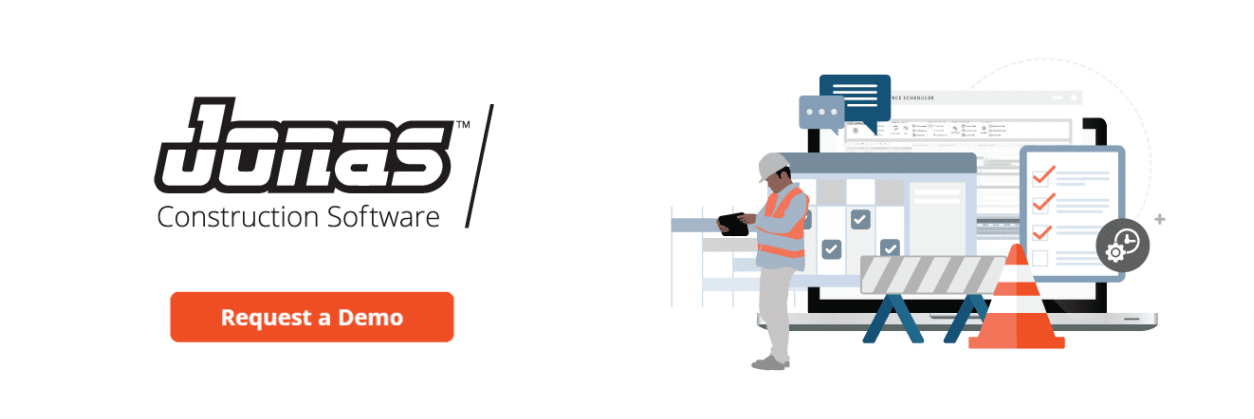Last Updated on July 17, 2023

There’s simply no denying the fact that construction is a risky business! Every day, your construction business is faced with many risks that could negatively affect your construction projects and even kill your bottom line. Construction projects can be very complex, and complexities and risks go hand in hand.
Basically, risk management is key to the success of your construction company. But are you doing everything you can to manage risks and prevent common pitfalls?
In this blog post, we’re sharing everything that construction project managers need to know about construction risks, the various ways to handle risks, and the ideal construction risk management process. Stay tuned until the end of the article for the absolute best way you can manage risk as a construction business.
What is Construction Risk Management?
In construction, risks are practically inevitable. That’s why the best way to control risks is through risk management rather than risk prevention. The purpose of construction risk management is to plan, monitor, and control measures that minimize the impact of risks. This process involves determining the risks that are present and the procedures that can be used to lessen their effects.
Types of Construction Risks: Know What You’re Up Against

As discussed, there are many opportunities for your construction business to experience risks. Here are some of the most common risks that you may encounter.
Health & Safety Risks
Construction sites are inherently risky locations. Unlike your average office job, workers and subcontractors on construction sites are much more likely to experience workplace bodily injuries and safety issues. Here are some of the most common health & safety risks for construction projects:
- Working at height
- Rapid changes in site conditions
- Moving equipment and vehicles
- Slips, trips, and falls
- Live electrical parts
- Asbestos
- Collapses
- Airborne dust
Keeping your workers safe is your top priority; however, unexpected hazards can pop up out of the blue and lead to project delays, or worse – serious injuries or fatalities. The best way to reduce health and safety risks on construction sites is to invest in training and PPE and ensure that workers on the field have access to all the information they need.
Construction Disputes
Construction disputes can result in litigation if you violate your construction contract and obligations. The main reason that construction disputes occur is due to contract errors. Although construction disputes may be the fault of your business, there are other reasons that a construction dispute might occur. For example, differing site conditions could also cause construction disputes.
Change Orders
Change orders are an inevitable part of construction projects. Clients may decide to amend the original construction contract or the scope of work. Change orders may also be the result of errors in the original contract and can lead to a lot of extra work for your business. When change orders aren’t handled correctly, they can lead to increased project costs and delays. Are you looking for a way to optimize your change order process? Check out the change order management feature in Jonas Construction Software!
Labor Shortages
Without enough skilled workers on the job, your productivity can crash and burn. This could negatively affect the profitability of your project and leave clients and customers disappointed. Issues with labor shortages are not uncommon, and many contractors find it difficult to keep up with the growing demand for their services. This risk makes it increasingly important to offer the right incentives to retain existing workers, so you have the capacity to take on larger projects should they come your way.
Environmental Risks
One risk you certainly can’t control is the weather. Floods, earthquakes, and other natural disasters are unexpected and can cause severe damage to construction sites and make it nearly impossible to complete work. Environmental risks are considered low probability, high impact risks, meaning they’re unlikely to occur but can have a serious impact on your business if they do. In the following sections, we’ll discuss types of risk management. When it comes to environmental risks, these are often risks you need to accept.
Project Risks
There are a number of risks that construction companies take on when starting a new project. Here are some of the most common project risks to watch out for:
- Poor management of resources
- Miscalculation of time
- Misunderstanding of project deliverables
As you can see, most of these risks come down to the project manager. An effective project manager should be able to mitigate these risks, especially with an effective project management software solution such as Jonas Construction Software.
Types of Construction Risk Management: Different Ways to Deal with Risks
There are a number of ways you can deal with risks, from deciding to avoid them altogether to accepting the risks and proceeding with caution. In the following sections, we’ll discuss each of your options when faced with potentially risky projects.
Avoiding Project Risks
If a project is too risky, it might not be worth taking on the risks at all! Risk avoidance involves turning down a project or negotiating to remove some of the biggest risks that a project poses. At the end of the day, you never want to take on a project where the risks outweigh the rewards.
Transferring Risks
Maybe your construction business is not the right fit for the job at hand, making it too risky for your company to take on. In this case, risk transfer is often the best approach. This involves determining a different project team or contractor that is more capable of assuming the risks of the job.
Mitigating Project Risks
Risk mitigation involves eliminating or reducing the risks associated with a particular job. You’re still taking on the job, but you’re doing so in a way that imposes the least risk possible on your company. This will require careful planning, and you may need additional resources such as extra workers to mitigate your risks effectively.
Accepting Project Risks
Sometimes, risks are simply unavoidable. In these situations, you may just choose to accept the risks and proceed with the project anyway. When deciding to accept risks, it’s best to accept risks with low probability and low impact. We’ll discuss the process of assessing the impact and probability of your risks in the section below.
How to Manage Construction Risks

Now you know the most common construction risks and the different ways to handle them. The next step is to explore the risk management process!
Identify All of Your Project Risks
The first step of a good risk management process should always be to identify all of the risks at hand for your project. You want to do this early on in the project lifecycle so you’re not left unprepared should your risks come to fruition. If you don’t identify your risks early on, you could also be accepting high-impact risks by default. More on this in the next section!
Assess the Impact & Probability of Your Risks
After you identify all the risks that your project poses, you’ll want to assess them based on two factors:
- How much could these risks impact your business? You may want to assess this factor in dollar amounts.
- What is the probability that these risks will occur? You may want to assess this factor in percentages.
Your top priority will be risks with high impact and high probability. These are the risks with the greatest potential to kill your bottom line. An example of this type of risk might be a subcontractor being unable to complete their work. Should this occur, your business would be in a lot of trouble!
After you evaluate the highest impact, highest probability risks, you can move on to risks with lower probability and impact.
Create a Risk Management Plan
Now that you have a good idea of the probability and impact of your risks, you can start to develop a risk management plan to help you manage your project risks. This will include elements such as risk ownership, risk response planning, risk monitoring, and more.
Get Your Team Members Involved
When identifying and assessing your risks and creating your risk management plan, you’ll want to involve your entire project team and important stakeholders. Different people will be able to identify different risks and suggest different risk management strategies based on their position. By relying on the expertise and knowledge base of your team, you’ll have a more well-rounded understanding of potential risks and the best way to address them should they occur.
Manage Your Construction Risks with Jonas Construction Software
The best way to effectively manage your project risks is to invest in the right cloud-based construction management software. Jonas Construction Software allows for process automation and empowers greater visibility into your projects which both help you mitigate risk as you grow your business. Additionally, our software solutions help to better collect and analyze data to predict and mitigate project risk more easily.
Construction may be a risky business but Jonas Construction Software makes it easier to manage risks effectively. See for yourself the difference Jonas Construction Software can make! Request a demo today.







